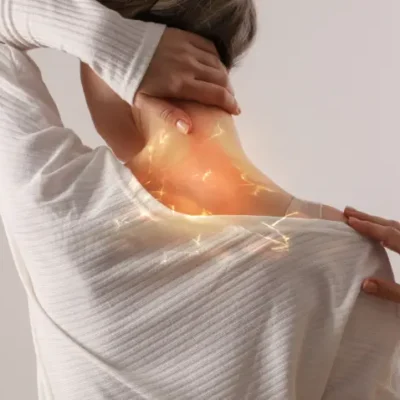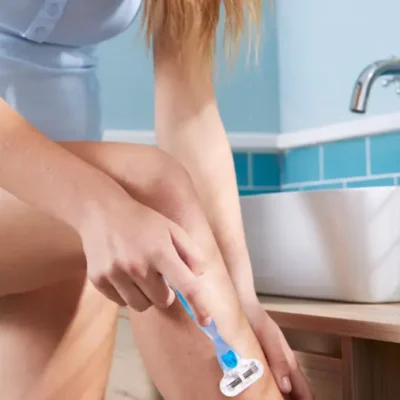Mechanical keyboards are becoming increasingly popular among computer enthusiasts and gamers for their tactile feel and durability. However, as with any type of keyboard, mechanical keyboards can accumulate dirt, dust, and debris over time. In this blog post, we will discuss how to clean your mechanical keyboard properly to ensure it stays in good working condition.
Before we begin, it is important to note that there are different types of mechanical keyboards, and the cleaning process may vary depending on the type and brand of the keyboard. Always refer to the manufacturer’s instructions or guidelines before attempting to clean your keyboard.
A Step-by-Step Cleaning Guide to Clean Your Mechanical Keyboard
Step 1: Disconnect the Keyboard
The first step in cleaning a mechanical keyboard is to disconnect it from the computer or device it is connected to. This will ensure that no accidental keystrokes occur during the cleaning process and prevent damage to your computer.
Step 2: Remove Keycaps
Next, remove the keycaps from the keyboard. This can be done using a keycap puller, which is a small tool designed specifically for this purpose. Alternatively, you can use a small, flat-head screwdriver or a credit card to gently pry off the keycaps.
Be sure to keep the keycaps in a safe place to prevent losing them.
Step 3: Clean the Keyboard
Once the keycaps are removed, it’s time to clean the keyboard itself. Use a can of compressed air to blow out any dust or debris that may have accumulated between the keys. Be sure to hold the can of compressed air upright and keep it at least a few inches away from the keyboard to prevent any damage.
For more stubborn dirt or debris, you can use a small, soft-bristled brush to gently scrub the keyboard. Be careful not to apply too much pressure, as this can damage the keys or switches.
Step 4: Clean the Keycaps
While the keyboard is drying, you can clean the keycaps. Fill a bowl with warm water and add a small amount of dish soap. Place the keycaps in the bowl and let them soak for a few minutes.
Use a soft-bristled brush to scrub the keycaps gently, being careful not to scratch or damage them. Once clean, rinse the keycaps with warm water and set them aside to dry.
Step 5: Reassemble the Keyboard
Once the keyboard and keycaps are dry, it’s time to reassemble the keyboard. Replace the keycaps in their correct positions and press down firmly until they snap into place.
Finally, reconnect the keyboard to your computer or device and test it to make sure it’s working properly.
In conclusion, cleaning a mechanical keyboard is a relatively straightforward process that can help extend the life of your keyboard and keep it functioning properly. By following these simple steps, you can keep your mechanical keyboard looking and feeling like new.
Also read: Top 5 Best Gaming Keyboards Under 5000 In India for Enhanced Gaming Experience
How to deep-clean your mechanical keyboard
If you want to do a deep cleaning on your mechanical keyboard, you can follow these additional steps:
Step 1: Remove Switches
To clean the switches and the areas underneath them, you may need to remove the switches from the keyboard. This can be done using a switch removal tool, which is a small tool designed specifically for this purpose. Alternatively, you can use a small, flat-head screwdriver or a credit card to gently pry out the switches.
Be sure to keep the switches in a safe place to prevent losing them.
Step 2: Clean the Switches and PCB
Once the switches are removed, you can clean them individually using a soft-bristled brush and isopropyl alcohol. Dip the brush into the alcohol and gently scrub each switch, being careful not to damage the contacts.
You can also use the brush and alcohol to clean the areas underneath the switches and the PCB (printed circuit board) itself. Be sure to let the alcohol evaporate completely before reassembling the keyboard.
Step 3: Reassemble the Keyboard
Once everything is dry, you can reassemble the keyboard. Replace the switches in their correct positions and press them down firmly until they snap into place.
Finally, reconnect the keyboard to your computer or device and test it to make sure it’s working properly.
Doing a deep cleaning on your mechanical keyboard may take more time and effort, but it can help improve the overall performance and longevity of your keyboard.
FAQ
A: While water can be used to clean the keycaps, it should not be used to clean the keyboard itself as it can damage the switches and other components. Instead, use a can of compressed air or a soft-bristled brush to remove dust and debris.
A: No, it is not recommended to use a dishwasher to clean keycaps as the heat and detergents can damage them. Instead, use warm water and dish soap to clean the keycaps, and then let them air dry.
A: No, it is important to disconnect the keyboard from your computer or device before cleaning it to prevent any accidental keystrokes or damage to your device.
A: The frequency of cleaning your mechanical keyboard depends on how often you use it and the environment it’s in. As a general rule, it’s a good idea to clean your keyboard at least once every few months or more frequently if you notice any dirt or debris accumulating.
A: It’s not recommended to use a vacuum cleaner to clean your mechanical keyboard as the suction can be too strong and damage the switches or keycaps. Instead, use a can of compressed air or a soft-bristled brush to remove dust and debris.
A: Yes, rubbing alcohol can be used to clean your mechanical keyboard. However, it’s important to use it sparingly and avoid getting it on any plastic parts as it can cause them to discolor or become brittle.
A: No, it’s not recommended to clean your mechanical keyboard with a wet cloth as the moisture can damage the switches and other components. Instead, use a can of compressed air or a soft-bristled brush to remove dust and debris.
A: Yes, lubricating your mechanical keyboard switches can help improve their performance and reduce noise. However, it’s important to use the right type of lubricant and apply it sparingly to avoid damaging the switches or affecting their feel.
A: No, it’s not recommended to put your mechanical keyboard in the dishwasher as the heat and moisture can damage the switches and other components. Instead, use a can of compressed air or a soft-bristled brush to remove dust and debris.
A: No, it’s not recommended to use a hairdryer to dry your mechanical keyboard as the heat can damage the switches and other components. Instead, let the keyboard and keycaps air dry completely before reassembling them.
Difference between normal and deep cleaning of mechanical keyboard
The main difference between normal and deep cleaning of a mechanical keyboard is the level of detail and thoroughness in the cleaning process. Normal cleaning typically involves wiping down the keycaps and using a can of compressed air to blow out any dust and debris that has accumulated in the keyboard. This type of cleaning is usually done on a regular basis to keep the keyboard looking and functioning well.
On the other hand, deep cleaning involves taking the keyboard apart to clean the switches and PCB (printed circuit board) underneath. This allows for a more thorough cleaning of the keyboard’s internal components, which can help improve its performance and lifespan. Deep cleaning can be done when the keyboard is particularly dirty or if it’s experiencing issues such as sticky keys or inconsistent keystrokes.
While normal cleaning can help keep your keyboard in good condition, deep cleaning is usually only necessary if you notice issues with its performance or if it’s been a long time since you’ve done a thorough cleaning. It’s important to be careful when taking the keyboard apart and to use the right cleaning tools and methods to avoid damaging any of the components.
Conclusion
In summary, keeping your mechanical keyboard clean is important for maintaining its performance and lifespan. Regular cleaning with a soft-bristled brush and can of compressed air can help prevent dirt and debris from accumulating on the keycaps and between the switches. For a more thorough cleaning, a deep cleaning can be done to remove dirt and debris that has accumulated on the switches and PCB. However, it’s important to be careful when taking the keyboard apart and to use the right cleaning tools and methods to avoid damaging any of the components. With proper care and maintenance, your mechanical keyboard can provide you with many years of reliable and comfortable typing.





